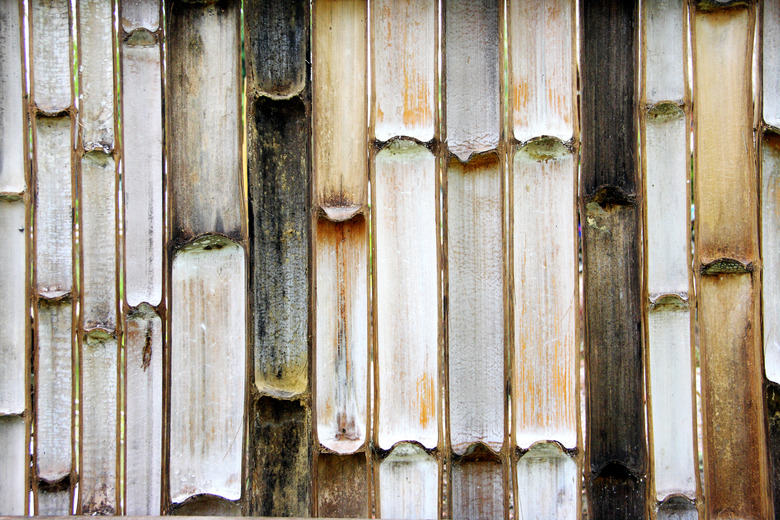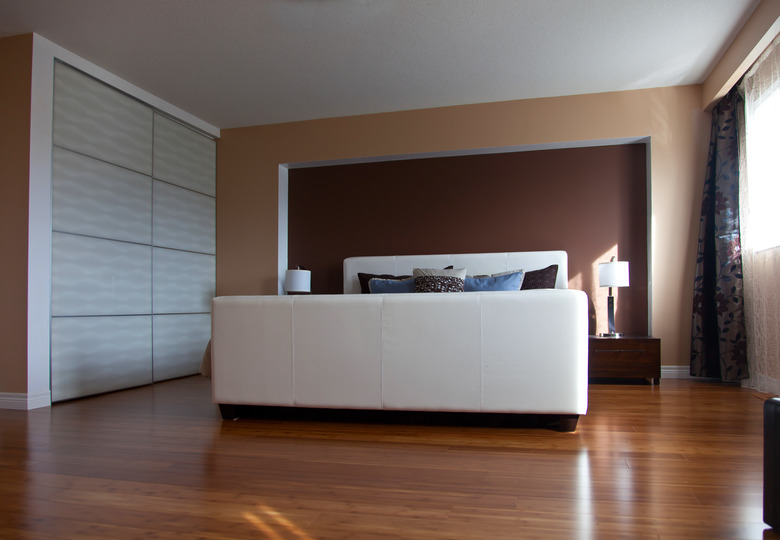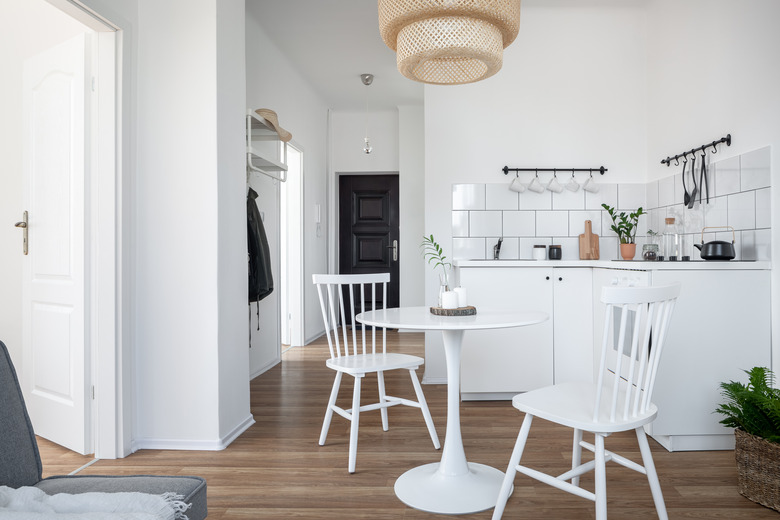Pros And Cons Of Bamboo Floors
Bamboo flooring, like other flooring products, has both advantages and disadvantages. Bamboo isn't a hardwood; instead, it's one of the more than 1,000 species of bamboo grasses. This means that not all bamboo floors come from the same species of bamboo, which can disappoint if you choose the wrong product.
Some manufacturers harvest bamboo while it is still immature, which results in a lower-quality product and flooring. When you know what to look for when contemplating a bamboo floor, you are better prepared to make a decision that won't have you wishing you chose another product.
Bamboo flooring doesn't have a long history, having first appeared on the North American market in 1989. It's one of the most eco-friendly flooring options out there, and because of its short history, it has a contemporary look that will never be mistaken for traditional hardwood flooring. That can be a plus or a minus depending on your flooring needs, and it's just one of the bamboo flooring pros and cons you need to consider before committing to this quickly evolving flooring product.
Types of Bamboo Flooring
Types of Bamboo Flooring
Bamboo is a renewable resource that grows all over the world, but the large woody species that grow in China and southeast Asia — primarily Moso bamboo — are the best ones for flooring.
Horizontal and vertical bamboo: The original manufacturing process, which is still used today, involves slicing the cylindrical stalks into strips, gluing the strips together under pressure and milling the resulting logs into flooring planks. When the planks are milled with the bamboo grain, the result is called vertical bamboo, and when they are milled across the grain, it's called horizontal bamboo.
Strand-woven bamboo: About 10 years after bamboo flooring was first introduced, a new production method called strand weaving was developed. In this process, the stalks are softened by boiling and are split into fibers that are then dipped in resin and pressed together to form a raw material that is much harder than vertical or horizontal bamboo. Of all types of bamboo flooring, strand-woven bamboo is by far the hardest, but it lacks the characteristic bamboo grain.
Engineered bamboo: Engineered bamboo flooring planks consist of a 2- to 4-milllimeter layer of bamboo covering a plywood or softwood core. Engineered flooring was first developed as a response to dwindling forest resources, but it turns out that it has key advantages over solid flooring:
- It can be milled into floating-floor planks like laminate ones, and installation is DIY-friendly.
- It's less vulnerable to warping and can be used in moist conditions.
- It's generally less expensive than solid flooring.
Pros of Bamboo Flooring
Pros of Bamboo Flooring
Since bamboo is a grass, it's natural to assume that bamboo flooring planks aren't as hard as hardwood ones, but in the case of strand-woven bamboo, the opposite is true. With a Janka rating higher than 5,000, it's harder than Brazilian walnut, the toughest lumber product available. Horizontal and vertical bamboo have Janka ratings around 1,700, which still makes them harder than red oak.
Top-quality bamboo planks, such as Cali Bamboo's Fossilized Flooring, Teragen Optimum 5.5 and other brands recommended by Home Flooring Pros are coated with as many as 10 coats of rock-hard finish. This makes them even more durable and scratch-resistant, so bamboo floors are easy to maintain.
Natural bamboo has pleasing yellow wood tones but also comes in colors and styles to match your decor. If you prefer a natural tone that is somewhat darker, you can also choose carbonized bamboo. To create this, manufacturers boil the bamboo to darken it, and the process softens the fibers, so carbonized bamboo has a significantly lower Janka rating of around 1,200, which is similar to domestic walnut and cherry.
You install bamboo planks in the same way that you install hardwood ones, and sanding and refinishing is OK. Because the flooring is generally less expensive than hardwood, you'll save money by choosing bamboo.
Cons of Bamboo Flooring
Cons of Bamboo Flooring
Because it's composed of natural fibers, bamboo flooring absorbs moisture when the humidity is high and releases moisture when the humidity falls, causing the planks to expand, contract and warp. Moisture vulnerability is its greatest weakness, although you can mitigate this somewhat by installing engineered planks, which are more water-resistant than solid ones.
Another problem with bamboo flooring is the possible presence of toxins such as formaldehyde in the resins used in the manufacturing process. This was endemic in the early days of bamboo flooring and still continues to be an issue, especially in less-expensive brands of horizontal and vertical bamboo flooring products originating in China. Anyone with chemical sensitivities is advised to consult the manufacturer's literature closely before deciding on a product.
If you're concerned about the toxicity of a particular product, check the manufacturer's specifications to make sure it is clean-air verified by the International Accreditation Service labs. If the manufacturer operates in California, it should also state compliance with the volatile organic compounds emissions criteria established by the California Section 01350 program.



